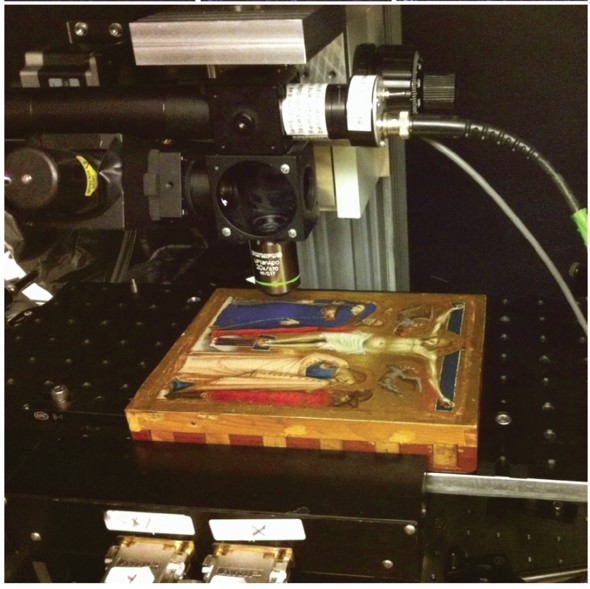Understanding Renaissance Artwork and Cultural Heritage with Nonlinear Laser Microscopy
- Duke University, Chemistry, Durham, United States
Some of the most interesting challenges in materials imaging come from cultural heritage objects-pottery, statues, paper and even paintings. Modern conservation science uses a range of imaging technologies to understand technique, evaluate degradation, and aid in restoration- but three-dimensional imaging is particularly difficult, leading most often to removal of a "cross-section" using a scalpel. Much of our recent work has focused on nonlinear laser microscopy in tissue (for example, for melanoma diagnosis), exploiting intrinsic contrast without fluorescence-and it turns out that the exact techniques which let us unravel the structure of a cancerous lesion also work to understand works of art [1] . Most notably, femtosecond pump-probe imaging can easily differentiate pigments which are nearly identical to the eye-and can do this ten or twenty times deeper than a microscope will see. I will present examples ranging from characterization of Renaissance artwork, to understanding how pigments lie on paper fibers, to characterizing pottery fragments.

